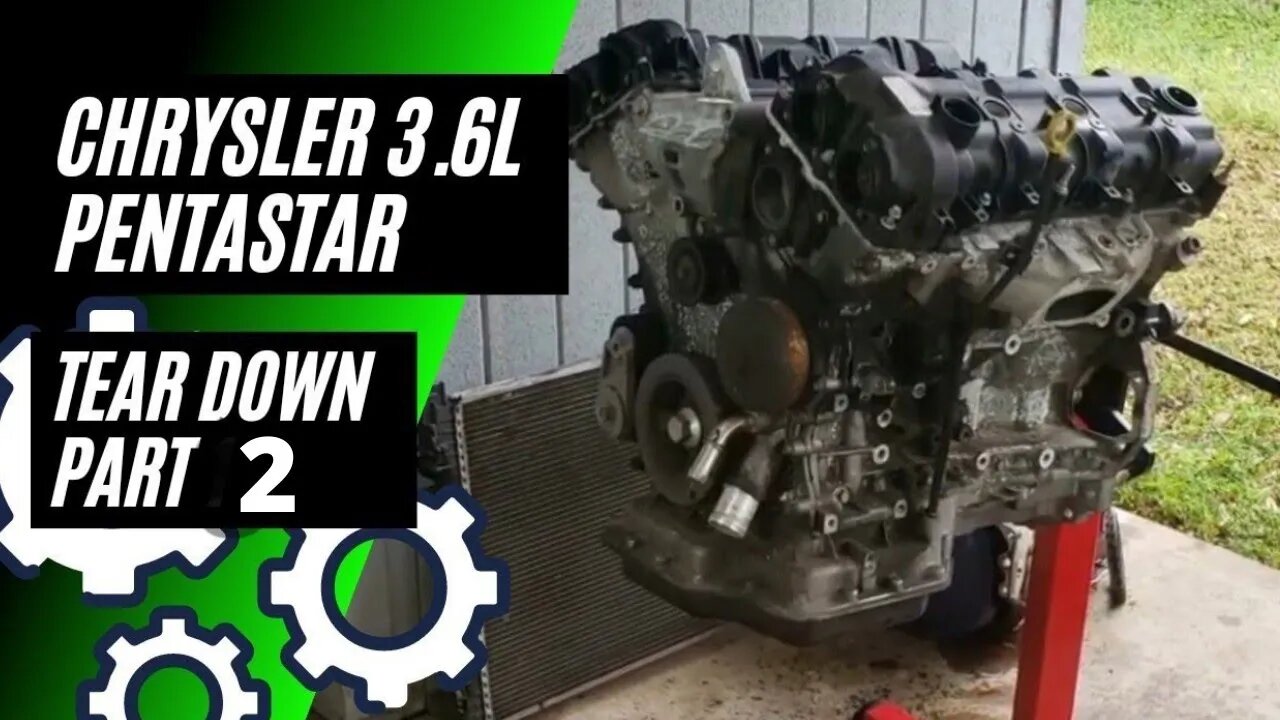Premium Only Content

Chrysler Pentastar 3.6L Tear Down: Part 2
This is part 2 of my Pentastar 3.6L tear down series. In this video I take you along as I take apart a Chrysler Pentastar 3.6L while discussing the various parts of the engine and explain how they work. In this video I will be getting into the cylinder head of the 3.6L. Camshafts, cam followers, hydraulic valve lash adjusters, valves and variable valve timing units will be gone over. It's a fun video and a bit of a deviation from my normal "how to" stuff. I hope you enjoy!
Note: this video Is a very high level overview of this engine and the parts inside. This video should not take the place of a manual and the tear down methods used are not meant to be used. It's just a fun and informational video....that probably doesn't have all the information you could every need for this engine.
Here is a link to the video discussing the cam follower failure.
https://youtu.be/se0q8gvwj-c
Here is a link to part 1 of this series.
https://youtu.be/bV5frHweDlI
Here is a link to part 3 of this series.
https://youtu.be/Px8B_iIfCG8
DISCLAIMER
Barbour's Auto Help is not responsible for any damage or personal injury incurred in the process of performing any auto repairs done by you the viewer. Automotive repair is extremely dangerous. Repair your vehicle at your own risk. It is the viewers responsibility to verify all information and procedures as outlined in YOUR REPAIR MANUAL AND OWNERS MANUAL FOR YOUR VEHICLE. Owning and using a repair manual suited for your vehicle is essential for correctly and safely performing ANY repair to your vehicle. Always wear safety glasses, protective gloves and heed all instructions for use applicable to any piece of equipment you may use. Due to circumstances out of the control of Barbours Auto Help, Barbours Auto Help makes no guarantee that by the use of the information given in this video a quality repair will be made. Barbour'sAutoHelp makes no guarantee that the information provided is totally complete, syncronized and accurate. Verify everything using an appropriate repair manual. Verify everything with your own research.
-
 2:35:06
2:35:06
Redacted News
4 hours agoLIVE: Renewal of the American Dream | Donald Trump Addresses Joint Session of Congress | Redacted
87.6K66 -

vivafrei
11 hours agoDonald Trump to Address Congress! Viva Frei LIVE WITH COMMENTARY!
114K49 -
 3:39:44
3:39:44
The Charlie Kirk Show
4 hours agoTHOUGHTCRIME - The Renewal of the American Dream Speech Special
164K61 -
 1:19:05
1:19:05
Kim Iversen
7 hours agoRFK Jr: Antisemitism Is a 'Health Threat' | Pam Bondi: Epstein Files Will Be Redacted For National Security??!
87.5K121 -
 2:39:05
2:39:05
Candace Show Podcast
6 hours agoWatch With Me: President Trump’s Address To Congress
103K109 -
 4:09:03
4:09:03
Benny Johnson
10 hours ago🚨President Trump's State of the Union Speech LIVE Right Now! We're INSIDE US Capitol, Special Guests
259K257 -
 13:09:41
13:09:41
Barry Cunningham
1 day agoPRESIDENT TRUMP SPEECH ADDRESS TO JOINT SESSION OF CONGRESS | INTERVIEWS ALL DAY!
86.3K40 -
 3:45:29
3:45:29
Drew Hernandez
22 hours agoWATCH PARTY: PRESIDENT TRUMP'S JOINT ADDRESS TO CONGRESS
51.9K168 -
 3:07:42
3:07:42
Laura Loomer
5 hours agoEP106: LIVE COVERAGE: President Trump Addresses Congress
37.9K7 -
 2:39:02
2:39:02
LFA TV
10 hours agoTRUMP'S JOINT SESSION! 3.4.25 9PM
46.9K13